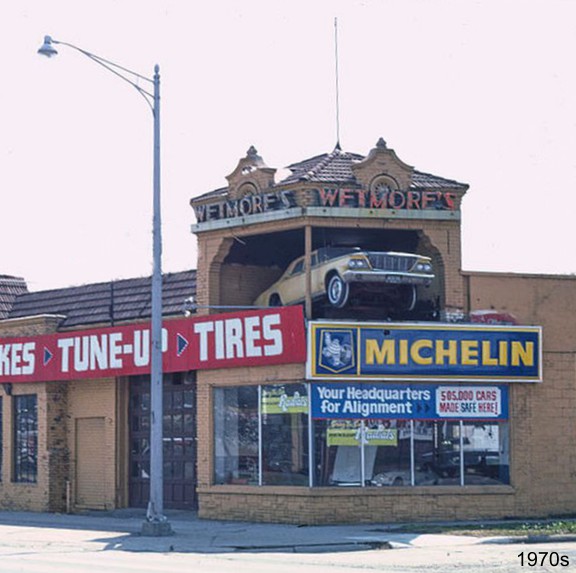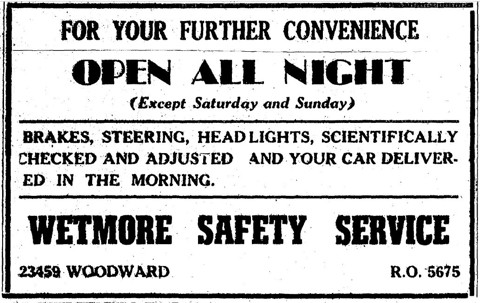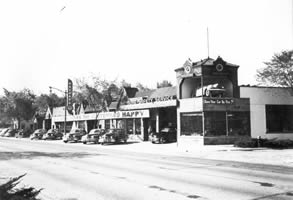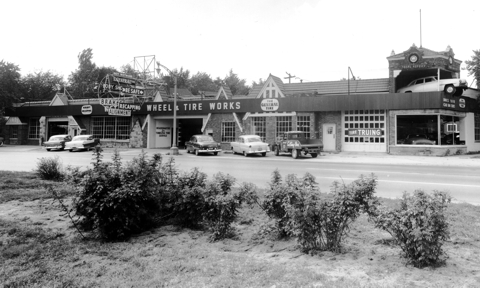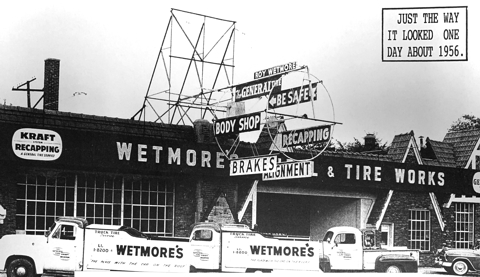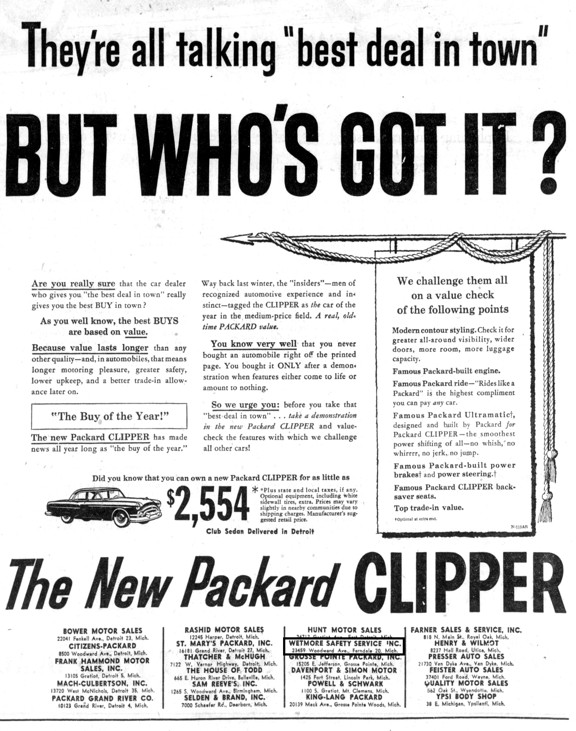![]()
Below is an excerpt of the article published
in the Spring 2021 Crow's Nest newsletter.
“LOOK FOR THE CAR ON THE ROOF”
MARKETING CREATES SUCCESS
Wills vehicles (not to be confused with Willys vehicles) are incredibly special and rare cars. The chosen vehicle first hoisted on top Wetmore’s would undoubtedly be quite distinctive and valuable today. There is a fascinating Wills Museum in Marysville Michigan (and online) with the whole story. A wonderful car for Roy to start with!
|
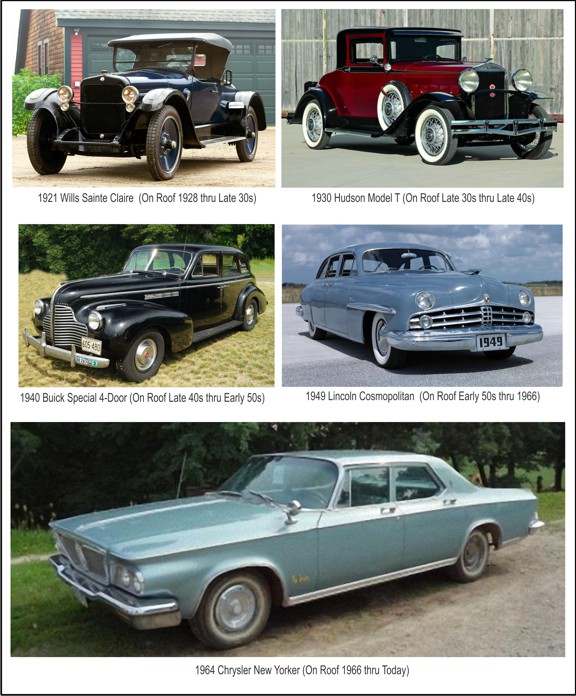
Type of Cars on the Roof
ASK THE MAN WHO OWNS ONE Initially Packard enjoyed post-war success selling 105,000 cars in 1949, just short of their annual production record. But success was short lived and by the early 50s Packard was sputtering. We cannot tell exactly when Wetmore’s sold their last Packard, but the last Packard ad including Wetmore’s was Sept 29, 1953 (by the Oct 12 1953 Packard ad, Wetmore’s was no longer listed). Roy’s Packard store may have been short-lived, but it left a lasting legacy in Ferndale. Wetmore had hired Frank Lloyd Wright prior to the Packard store launch to make the facility really special. Things did not turn out as planned as you will soon see….
FRANK LLOYD WRIGHT CONNECTION
|

Dramatic 1947 Design by Frank Lloyd Wright
In 1949, Pleasant Ridge resident Robert Pond married Ann Wetmore
(Daughter of Roy & Ruth) and moved to California. Soon after,
Roy & Ruth visited the young couple in California and invited the
Ponds to join them on their visit to Taliesin West in Scottsdale.
Presumably this was for Roy to review progress on the 1947 design
he had commissioned. The Ponds, who were already interested
in architecture, were so impressed by what they saw
at Taliesin that they worked to join Wright’s fellowship
creating a life-long relationship. “You only got in by a personal interview with Mr. Wright,” Pond said. “He accepted us, and the next June we went to Wisconsin”. They joined the communal existence at Taliesin, spending winters at Taliesin West. “Twelve months a year, seven days a week, you lived there and you worked there” Pond said. Pond remembers Wright coming up to his drafting table with a big wide pencil in hand. Once Mr. Wright made his revisions, Pond started work cleaning up the drawing. Presumably, that is the role Robert Pond played in the 1951 more simplified designs for Wetmore’s On page 286 of the Taschen book is a “Garage for Roy Wetmore” (Taliesin project #5117) noting the simplified 1951 design shown below. |

Simplified 1951 Design by Frank Lloyd Wright's Team
It seems that Roy Wetmore & Frank Lloyd Write could not agree upon changes that Roy wanted to make, so plans were put in a file somewhere. Most likely the cost to construct such an elaborate facility, the impact to the neighborhood, and Packard’s struggles in the early 50s also helped stall these plans. The service desk area was remodeled in the “style of Wright” but little remains today. There is a website devoted to the Wright influenced service desk area from a few years ago (link HERE).
Interestingly, in 2018 Spanish Architect David Romero, worked with the Frank Lloyd Wright Foundation to illustrate a few unbuilt FLW designs. Inspired by the Guggenheim ramp designs, and 1947 Wetmore’s ramp design, one of the projects was Wetmore’s. The results are stunning, ending up in Architectural Digest and across social media (example HERE). More can be found about this artist - including sale of his prints - HERE
AN ACTIVE RETIREMENT While chomping on a cigar in 1972 he pulled trees and dug 3 ponds in a bulldozer he purchased since he could not rent one. He bought the biggest dozer available and named it “Herkimer”. He had a few helpers who were not up to the task, so had to do the work himself. He was stuck so deep at times that he thought about just burying the dozer and dream. But eventually was able to hire a team with dredges and earth movers to get back on track. The course opened in 1976 and enjoyed commercial success. It was sold to subsequent developers and is a world-class resort operating today HERE.
FAMILY BUSINESS WOVEN INTO FERNDALE FABRIC
|
Spotlight on the business is HERE
Story in Ferndale Friends HERE
Wetmore's Home Page
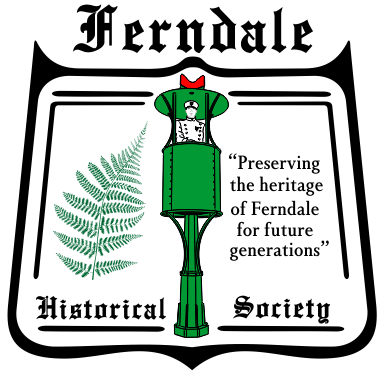
Unauthorized use or duplication of this material without expressed
and written consent from the Ferndale Historical Society is prohibited.
Revised: Aug 17, 2023
